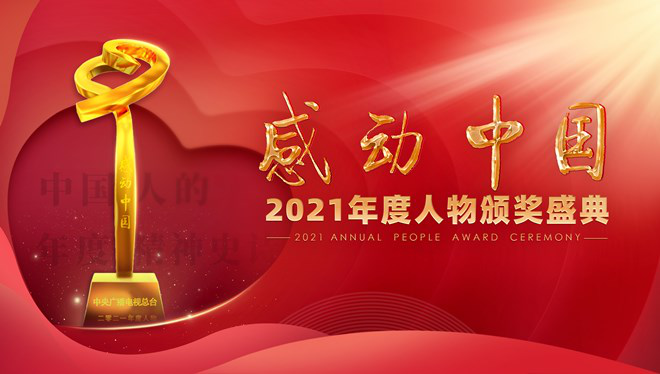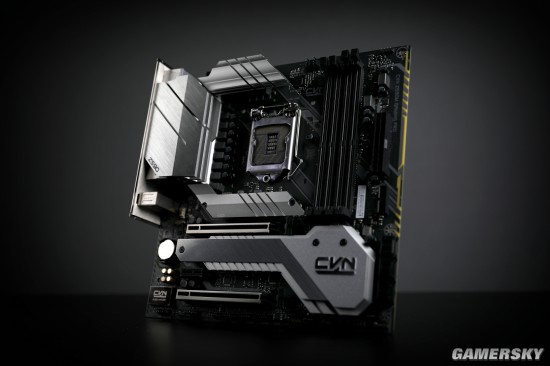Xinhua News Agency, Beijing, May 28th
Regulations on the punishment of managers of state-owned enterprises
Chapter I General Provisions
Article 1 In order to standardize the punishment of managers of state-owned enterprises and strengthen the supervision of managers of state-owned enterprises, these Regulations are formulated in accordance with the Law of People’s Republic of China (PRC) Municipality on Administrative Punishment of Public Officials (hereinafter referred to as the Administrative Punishment Law of Public Officials) and other laws.
Article 2 The managers of state-owned enterprises mentioned in these Regulations refer to the following public officials in state-funded enterprises:
(a) personnel who perform the duties of organization, leadership, management and supervision in wholly state-owned companies and enterprises;
(2) Persons who are nominated, recommended, appointed and approved by party organizations or state organs, wholly state-owned companies, enterprises and institutions, and who perform the duties of organization, leadership, management and supervision in state-owned holding and shareholding companies and their branches;
(3) Personnel who engage in organization, leadership, management and supervision in state-owned holding and shareholding companies and their branches on their behalf with the approval or research decision of organizations responsible for managing and supervising state-owned assets in state-funded enterprises.
The organs and units that appoint and remove managers of state-owned enterprises (hereinafter referred to as the appointment and removal organs and units) shall impose sanctions on illegal managers of state-owned enterprises, and the provisions of Chapters II and III of the Law on Administrative Punishment of Public Officials and these Regulations shall apply.
Article 3 The disciplinary work of managers in state-owned enterprises shall adhere to the leadership of the Communist Party of China (CPC), the principle of the Party governing cadres, strengthen the construction of managers in state-owned enterprises, and promote the high-quality development of state-owned enterprises.
Article 4 The appointment and removal organs and units shall strengthen the education, management and supervision of the managers of state-owned enterprises. The punishment given to the managers of state-owned enterprises should adhere to fairness and collective discussion and decision; Insist on combining leniency with severity and combining punishment with education; Adhere to the principle of the rule of law, take facts as the basis, take the law as the criterion, and protect the legitimate rights and interests of managers and related personnel of state-owned enterprises according to law.
Article 5 Institutions that perform the responsibilities of investors or departments with cadre management authority shall, in accordance with laws, regulations and relevant provisions of the state, guide state-owned enterprises to integrate and optimize supervision resources, promote the connection between investor supervision and discipline inspection supervision, patrol supervision, audit supervision, accounting supervision and social supervision, improve a coordinated and efficient supervision mechanism, establish an internal supervision and management system that cooperates with and restricts each other, and enhance the systematicness, pertinence and effectiveness of supervision over state-owned enterprises and their managers.
Article 6 The punishment given to the managers of state-owned enterprises shall be based on clear facts, conclusive evidence, accurate characterization, proper handling, legal procedures and complete procedures, which shall be appropriate to the nature, circumstances and degree of harm of their illegal acts.
Chapter II Types and Application of Punishment
Seventh types of punishment are:
(1) warning;
(2) recording a demerit;
(3) recording gross demerits;
(4) demotion;
(5) Dismissal;
(6) expulsion.
Article 8 The period of punishment is:
(1) Warning, 6 months;
(two) demerit, 12 months;
(3) Gross demerit, 18 months;
(4) demotion and dismissal for 24 months.
The punishment decision shall take effect as of the date when it is made, and the punishment period shall be counted from the date when the punishment decision takes effect.
Ninth managers of state-owned enterprises have two or more illegal acts that need to be punished at the same time, and their punishments should be determined separately. If the types of punishments that should be given are different, the heaviest punishment shall be implemented; If more than one punishment of the same kind should be given below dismissal, the punishment period may be determined at least one punishment period and less than the sum of multiple punishment periods, but the longest period shall not exceed 48 months.
Article 10 If a state-owned enterprise commits an illegal act or the decision made collectively by the managers of the state-owned enterprise is illegal and should be investigated for legal responsibility, the leaders who are responsible and the managers of the state-owned enterprise who are directly responsible shall be punished.
If two or more managers of state-owned enterprises jointly violate the law and need to be punished, they shall be punished accordingly according to their respective responsibilities.
Eleventh managers of state-owned enterprises in any of the following circumstances, can be given a lighter or mitigated punishment:
(a) take the initiative to account for the illegal acts that I should be punished;
(two) to cooperate with the investigation and truthfully explain my illegal facts;
(three) to report the illegal acts of others, which are verified by investigation;
(four) take the initiative to take measures to effectively avoid, recover losses or eliminate adverse effects;
(5) playing a secondary or auxiliary role in joint illegal acts;
(six) take the initiative to hand in or refund the illegal income;
(seven) belong to promote the reform of state-owned enterprises due to lack of experience, first try mistakes;
(eight) other lighter or mitigated circumstances as prescribed by laws and regulations.
Giving a lighter punishment means giving a lighter punishment within the range of punishment that should be given to the illegal acts stipulated in these regulations.
Mitigating the punishment refers to reducing the punishment by one file in addition to the punishment range that the illegal acts stipulated in these regulations should be subject to.
Article 12 If the manager of a state-owned enterprise commits a minor illegal act and falls under one of the circumstances specified in the first paragraph of Article 11 of these Regulations, he may be reminded by conversation, criticized and educated, ordered to check or admonished, exempted or not punished.
If the managers of state-owned enterprises are held hostage or coerced to participate in illegal activities because they don’t know the truth and do repent after criticism and education, they may be mitigated, exempted or not punished.
Thirteenth managers of state-owned enterprises in any of the following circumstances, should be given a heavier punishment:
(1) Whoever intentionally violates the law again during the punishment period shall be punished;
(two) to prevent others from reporting and providing evidence;
(three) collusion or forgery, concealment or destruction of evidence;
(4) shielding the co-conspirators;
(5) Coercing or instigating others to commit illegal acts;
(6) Refusing to hand in or refund the illegal income;
(seven) other aggravating circumstances as prescribed by laws and regulations.
A heavier punishment refers to a heavier punishment within the range of punishment that should be given to illegal acts stipulated in these regulations.
Fourteenth managers of state-owned enterprises shall not be promoted to posts, post grades and titles during the punishment period; Among them, those who have been recorded, recorded, demoted or dismissed shall not be promoted to the salary level. Those who have been removed from their posts shall be demoted in their posts or post grades, and their salaries and benefits shall be reduced at the same time. If dismissed, the employer shall terminate the labor contract according to law.
Article 15 The property illegally obtained by the managers of state-owned enterprises and their own property used for illegal acts shall be returned to the original owners or holders, except for those that should be confiscated, recovered or ordered to make restitution by the relevant authorities according to law.
The appointment and removal organs and units shall correct the positions, ranks, grades, positions and staff grades, professional titles, treatment, qualifications, academic qualifications, degrees, honors, awards and other benefits obtained by managers of state-owned enterprises due to illegal acts or suggest relevant organs, units and organizations to correct them according to regulations.
Sixteenth retired managers of state-owned enterprises who have committed illegal acts before or after retirement should be punished, no decision on punishment will be made, but they can be investigated; Those who should be punished by demotion, dismissal or dismissal according to law shall be treated accordingly in accordance with the provisions, and the illegally obtained property and personal property used for illegal acts shall be dealt with in accordance with the provisions of Article 15 of these regulations.
Chapter III Illegal Acts and Their Applicable Punishment
Seventeenth managers of state-owned enterprises have one of the following acts, according to the provisions of Article 28 of the Law on Administrative Punishment of Public Officials, be given a demerit or a gross demerit; If the circumstances are serious, he shall be demoted or removed from his post; If the circumstances are serious, be dismissed:
(1) Spreading remarks that are detrimental to upholding and improving the basic socialist economic system;
(two) refusing to implement or disguised not to implement the relevant decision-making arrangements for the reform and development of state-owned enterprises and party building;
(3) Harming national security and national interests in foreign economic cooperation, foreign aid and foreign exchanges.
Publicly publishing articles, speeches, declarations and statements that oppose the guiding ideology of the country established by the Constitution, the Communist Party of China (CPC)’s leadership, the socialist system and reform and opening up will be dismissed.
Eighteenth managers of state-owned enterprises have one of the following acts, according to the provisions of Article 30 of the Law on Administrative Punishment of Public Officials, given a warning, demerit or gross demerit; If the circumstances are serious, he shall be demoted or dismissed:
(a) in violation of the provisions of the decision-making procedures, responsibilities and authority to decide on major decision-making matters of state-owned enterprises, important personnel appointment and removal matters, major project arrangements, large-scale capital operation matters;
(2) Deliberately evading, interfering with or undermining collective decision-making, and individuals or a few people decide on major decision-making matters, important personnel appointment and dismissal matters, major project arrangements, and large-scale capital operation matters of state-owned enterprises;
(three) refusing to implement or arbitrarily change the major decisions made by the party committees (groups), shareholders (general meetings), boards of directors, workers’ congresses and other collectives of state-owned enterprises according to law;
(4) Refusing to implement, or in disguised form, delaying the implementation of decisions made by institutions, industry management departments and other relevant departments that perform the responsibilities of investors according to law.
Article 19 Managers of state-owned enterprises who commit any of the following acts shall be given a warning, demerit or gross demerit according to the provisions of Article 33 of the Law on Administrative Punishment of Public Officials; If the circumstances are serious, he shall be demoted or removed from his post; If the circumstances are serious, be dismissed:
(1) Taking advantage of his position, embezzling, stealing, defrauding or illegally occupying or misappropriating the property and customer assets of the enterprise and its affiliated enterprises by other means;
(2) taking advantage of his position to extort or illegally accept other people’s property and seek benefits for others;
(3) Bribing bribes to state organs, state-funded enterprises, institutions and people’s organizations, or to state employees, employees of enterprises or other units, foreign public officials and officials of public international organizations for the purpose of seeking illegitimate interests;
(4) Taking advantage of the influence of authority or position, in violation of regulations, seeking personal gain for himself or others in major matters concerning the rights and interests of investors of state-owned assets in enterprises, as well as in engineering construction, asset disposal, publication and distribution, bidding and other activities;
(5) conniving at or acquiescing in the personal gain of a specific related person by taking advantage of the influence of his own authority or position in major matters concerning the rights and interests of investors in state-owned assets and in the business management activities of the enterprise;
(six) in violation of regulations, privately divide the state-owned assets to individuals in the name of the unit.
Those who refuse to correct a specific related person for holding a post, taking a part-time job or engaging in business activities in violation of regulations, and do not obey the post adjustment, shall be removed from their posts.
Article 20 If the manager of a state-owned enterprise commits any of the following acts, he shall be warned, given a demerit or given a serious demerit according to the provisions of Article 35 of the Law on Administrative Punishment of Public Officials; If the circumstances are serious, he shall be demoted or dismissed:
(1) Exceeding the total wages or paying wages, or setting and distributing wage income in other forms such as allowances, subsidies and bonuses in addition to the total wages;
(two) the total wage budget management is not implemented, or the total wage filing or approval procedures are not fulfilled as required;
(three) in violation of regulations, self salary, incentives, allowances, subsidies and other welfare monetary income;
(four) in training activities, office space, official vehicles, business entertainment, travel expenses and other aspects beyond the prescribed standards and scope;
(five) public travel or disguised public travel in the name of study and training, investigation and research, and employee recuperation.
Twenty-first managers of state-owned enterprises who commit any of the following acts shall be given a warning, demerit or gross demerit according to the provisions of Article 36 of the Law on Administrative Punishment of Public Officials; If the circumstances are serious, he shall be demoted or removed from his post; If the circumstances are serious, be dismissed:
(a) in violation of regulations, individuals run enterprises through business, own shares or securities of unlisted companies (enterprises), engage in paid intermediary activities, register companies outside the country (territory) or invest in shares and other profit-making activities;
(2) Taking advantage of his position to run an enterprise similar to the enterprise he works for for others;
(three) in violation of regulations, without approval in the enterprise funded by the enterprise or other enterprises, institutions, social organizations, intermediaries, international organizations, etc.;
(four) approved to work part-time, but in violation of regulations to receive salary or other income;
(five) the use of enterprise insider information or other undisclosed information, business secrets, intangible assets, etc. for personal gain.
Article 22 If the managers of state-owned enterprises infringe upon the legitimate rights and interests of the clients or social public interests in the course of performing their duties of providing social public services, and are verified by the regulatory authorities and put forward suggestions for punishment, they shall be given a warning, demerit or gross demerit according to the provisions of Article 38 of the Law on Administrative Punishment of Public Officials; If the circumstances are serious, he shall be demoted or removed from his post; If the circumstances are particularly serious, they will be expelled.
Article 23 If the managers of state-owned enterprises commit any of the following acts, resulting in the loss of state-owned assets or other serious adverse consequences, they shall be given a warning, demerit or gross demerit according to the provisions of Article 39 of the Law on Administrative Punishment of Public Officials; If the circumstances are serious, he shall be demoted or removed from his post; If the circumstances are serious, be dismissed:
(1) Interception, occupation, misappropriation or default of budgetary revenues that should be turned over to the state treasury;
(two) in violation of regulations, do not perform or do not correctly perform the duties of investment management;
(three) in violation of regulations, related transactions, financing trade, false transactions, false joint ventures, affiliated operations and other activities;
(4) Failing to register or failing to register the property rights of state-owned assets within the time limit prescribed by the state, or forging, altering, leasing, lending or selling the property rights registration certificate (form) of state-owned assets;
(five) refusing to provide relevant information or compiling false data, resulting in distortion of the performance evaluation results of state-owned enterprises;
(6) Concealing the real situation of the enterprise, failing to truthfully provide relevant information and materials to intermediary service institutions such as accounting firms, law firms and asset appraisal institutions, or colluding with intermediary service institutions such as accounting firms, law firms and asset appraisal institutions to falsify.
Twenty-fourth managers of state-owned enterprises who commit any of the following acts shall be given a warning, demerit or gross demerit according to the provisions of Article 39 of the Law on Administrative Punishment of Public Officials; If the circumstances are serious, he shall be demoted or removed from his post; If the circumstances are serious, be dismissed:
(1) Money laundering or participating in money laundering;
(2) Absorbing clients’ funds without accounting, illegally absorbing public deposits or absorbing public deposits in disguised form, and participating in private lending in violation of regulations or in disguised form;
(3) Issuing loans in violation of regulations, or writing off bad debts and disposing of non-performing assets by reducing, suspending, reducing, deferring, and extending the loan principal;
(4) Issuing financial bills and providing guarantees in violation of regulations, and accepting, paying or guaranteeing illegal bills;
(five) in violation of the fiduciary duty, unauthorized use of client funds or other entrusted or trusted assets;
(6) Forging or altering currency, precious metals, financial bills or securities issued by the state;
(7) Forging, altering, transferring, leasing or lending business licenses or approval documents of financial institutions, and establishing financial institutions and issuing stocks or bonds without approval;
(8) fabricating and disseminating false information that affects securities and futures trading, manipulating the securities and futures markets, providing false information or forging, altering or destroying trading records to trick investors into buying and selling securities and futures contracts;
(9) Making false claims or participating in insurance fraud;
(ten) stealing, buying or illegally providing other people’s credit card information and other citizens’ personal information.
Twenty-fifth state-owned enterprise managers have one of the following acts, resulting in adverse consequences or influence, according to the provisions of Article 39 of the Law on Administrative Punishment of Public Officials, given a warning, demerit or gross demerit; If the circumstances are serious, he shall be demoted or removed from his post; If the circumstances are serious, be dismissed:
(1) divulging the inside information or business secrets of the enterprise;
(2) Forging, altering, transferring, leasing or lending administrative license certificates and qualification certificates, or leasing or lending the name of a state-owned enterprise or the font size in the enterprise name;
(three) in violation of regulations, borrowing or borrowing local government debts in disguise;
(four) in violation of regulations outside People’s Republic of China (PRC), causing major engineering quality problems, causing major labor disputes or other serious consequences;
(five) failure to perform or fail to perform the duties of safety production management according to law, resulting in production safety accidents;
(6) Formalistic and bureaucratic behaviors such as perfunctory response, buck passing, or one-sided understanding, mechanical implementation of the party and state line, principles and policies, and major decision-making arrangements;
(7) Refusing, obstructing or delaying the work of investor supervision, audit supervision and accounting supervision carried out according to law, or refusing to rectify the problems found by investor supervision, audit supervision and accounting supervision, prevaricating and making false rectification;
(eight) do not provide relevant information, submit relevant reports or fulfill the obligation of information disclosure, or cooperate with other subjects to engage in illegal acts;
(nine) do not perform their statutory duties or illegally exercise their functions and powers, infringing upon the legitimate rights and interests of workers;
(ten) in violation of regulations, refuse or delay the payment of small and medium-sized enterprises, wages of migrant workers, etc.;
(eleven) instigating, instigating, forcing, conniving, shielding subordinates in violation of laws and regulations.
Chapter IV Procedure of Punishment
Article 26 The appointment and removal organs and units shall, in accordance with the cadre management authority, punish the managers of state-owned enterprises who commit illegal acts as stipulated in the Law on Administrative Punishment of Public Officials and these Regulations according to law, so as to protect the legitimate rights and interests of the managers of state-owned enterprises and related personnel.
The appointment and removal organs and units shall, in combination with the organizational forms and organizations of state-owned enterprises and other actual conditions, clearly define the internal departments or institutions (hereinafter referred to as the undertaking departments) that undertake the disciplinary work of managers of state-owned enterprises, their responsibilities, authorities and operational mechanisms.
Article 27 The investigation and handling of managers of state-owned enterprises suspected of violating the law shall be carried out by two or more staff members, and shall be handled according to the following procedures:
(a) with the consent of the person in charge of the appointment and removal organ or unit, the undertaking department shall make a preliminary verification of the clues that need to be investigated and handled;
(II) After preliminary verification, if the undertaking department thinks that the manager of the state-owned enterprise is suspected of violating the Law on Administrative Punishment of Public Officials and the provisions of this Ordinance and needs further verification, it shall file a case with the approval of the principal responsible person of the appointment and removal organ or unit, inform the manager of the state-owned enterprise under investigation in writing (hereinafter referred to as the respondent) and his unit, and notify the supervisory organ with management authority;
(3) The undertaking department is responsible for further investigating the illegal acts of the investigated person, collecting and verifying relevant evidential materials, obtaining information from relevant units and personnel, forming a written investigation report, and reporting to the person in charge of the appointment and removal organ or unit, and the relevant units and individuals shall truthfully provide information;
(4) The undertaking department will inform the investigated person of the facts found in the investigation and the basis for the proposed punishment, listen to their statements and arguments, and verify and record the facts, reasons and evidence presented by them. If the facts, reasons and evidence presented by the investigated person are established, they shall be adopted;
(5) The undertaking department shall, after examination, put forward suggestions for handling, report to the leading members of the appointment and removal organs and units for collective discussion according to procedures, make a decision on giving punishment, exempting punishment, not giving punishment or withdrawing the case to the person under investigation, and notify the supervisory organ with management authority;
(6) The appointment and removal organ or unit shall, within one month from the date of making the decision in Item 5, Paragraph 1 of this Article, notify the person under investigation and his unit in writing of the decision to punish, exempt from punishment, refuse to punish or dismiss the case, and announce it within a certain range. If it involves state secrets, commercial secrets or personal privacy, it shall be handled in accordance with relevant state regulations;
(seven) the undertaking department shall put the relevant decisions and implementation materials into the personal files of the investigated person, and at the same time collect relevant materials to form the working files of the punishment case.
It is strictly forbidden to collect evidence by threats, temptations, deception and other illegal means. Evidence collected by illegal means shall not be used as the basis for punishment. The punishment shall not be aggravated because of the respondent’s defense.
Twenty-eighth major illegal cases in the investigation process, if necessary, you can ask the supervisory organs with management authority to provide necessary support.
If the illegal situation is complex, involves a wide range or has a significant impact, and it is difficult for the appointment and removal organ or unit to investigate and verify, with the consent of the person in charge of the appointment and removal organ or unit, the supervisory organ with management authority can be consulted for handling.
Twenty-ninth to punish the managers of state-owned enterprises, it shall make a decision within 6 months from the date of filing the case; If the case is complicated or there are other special circumstances, it may be appropriately extended with the approval of the principal responsible person of the appointment and removal organ or unit, but the extension period shall not exceed 6 months.
Thirtieth decided to give punishment, it shall make a written decision on punishment.
The written decision on punishment shall specify the following items:
(a) the name, work unit and position of the manager of the state-owned enterprise (hereinafter referred to as the punished person);
(2) Illegal facts and evidence;
(three) the types and basis of punishment;
(four) refuses to accept the punishment decision, the way and time limit for applying for review and appeal;
(five) the name and date of the organ or unit that made the decision on punishment.
The written decision on punishment shall be stamped with the seal of the organ or unit that made the decision.
Thirty-first people involved in the investigation and handling of illegal cases of managers of state-owned enterprises shall voluntarily withdraw under any of the following circumstances, and the respondents, prosecutors and other relevant personnel may ask them to withdraw:
(1) Being a close relative of the respondent or the prosecutor;
(2) Having served as a witness in this case;
(3) He or his close relatives have an interest in the case under investigation;
(four) other circumstances that may affect the impartial investigation and handling of the case.
The withdrawal of the principal person in charge of the appointment and removal organ or unit shall be decided by the person in charge of the organ or unit at the next higher level; The withdrawal of other personnel involved in the investigation and handling of illegal cases shall be decided by the person in charge of the appointment and removal organ or unit.
If the appointment and removal organ or unit finds that the personnel involved in the disciplinary work should be avoided, it can directly decide that the personnel should be avoided.
Article 32 If the managers of state-owned enterprises are investigated for criminal responsibility according to law, the appointment and removal organs and units shall be punished according to the effective judgments, rulings and decisions of judicial organs and the facts and circumstances identified.
If the managers of state-owned enterprises are subject to administrative punishment according to law and should be punished, the appointment and removal organs and units can be punished according to the facts and circumstances determined by the effective administrative punishment decision after verification.
After the appointment and removal organ or unit makes a decision on punishment according to the provisions of the first and second paragraphs of this article, if the judicial organ or administrative organ changes the original effective judgment, ruling or decision according to law, which has an impact on the original decision on punishment, the appointment and removal organ or unit shall make corresponding treatment again according to the changed judgment, ruling or decision.
Article 33 Where an appointment and removal organ or unit punishes the managers of state-owned enterprises who are deputies to people’s congresses at all levels or members of committees at all levels of the China People’s Political Consultative Conference, it shall notify the relevant Standing Committee of the People’s Congress, the Presidium of the People’s Congress of townships, nationality townships and towns or the Standing Committee of the People’s Political Consultative Conference of China.
Article 34 If the managers of state-owned enterprises are suspected of violating the law and have been placed on file for investigation, it is not appropriate to continue to perform their duties, the appointment and removal organs and units may decide to suspend them from performing their duties. Managers of state-owned enterprises shall not leave the country or resign from public office without the consent of the appointment and removal organ or unit that decided to file the case during the investigation; Their appointment and removal organs and units, as well as organs and units at higher levels, shall not exchange, promote, reward or go through retirement procedures.
Article 35 If it is found in the investigation that the managers of state-owned enterprises have suffered false reports, false accusations, frame-ups, insults and slanders for performing their duties according to law, resulting in adverse effects, the appointment and removal organs and units shall promptly clarify the facts, restore their reputations and eliminate the adverse effects in accordance with regulations.
Article 36 If the managers of state-owned enterprises are punished by demotion, dismissal or dismissal, the relevant personnel departments shall, within one month after the decision is made, handle the procedures for changing their posts, positions, wages and other relevant benefits according to the management authority, and change or terminate the labor contract according to law; Under special circumstances, with the approval of the principal responsible person of the appointment and removal organ or unit, the processing period may be appropriately extended, but the longest period shall not exceed 6 months.
Thirty-seventh managers of state-owned enterprises who have been punished other than dismissal, show repentance during the period of punishment, and there is no illegal situation that should be punished again, the punishment will be automatically lifted after the expiration of the punishment period.
After the punishment is lifted, the post, rank, level, post and staff level, professional title and salary level of assessment and promotion will no longer be affected by the original punishment. However, the post, rank, grade, post and staff grade, professional title, salary and treatment grade, etc. before being punished are not restored.
The appointment and removal organs and units shall, in accordance with the relevant provisions of the state, correctly treat and rationally use the managers of state-owned enterprises who have been punished, adhere to paying equal attention to incentives and supervision, and create a good environment for entrepreneurs.
Chapter V Review and Appeal
Article 38 If the person being punished refuses to accept the punishment decision, he may, within one month from the date of receiving the punishment decision, apply to the appointment and removal organ or unit that made the punishment decision (hereinafter referred to as the original punishment decision unit) for review. The original punishment decision unit shall make a review decision within 1 month after receiving the application for review.
If the person being punished delays the application period for review due to irresistible reasons or other legitimate reasons, he may apply for an extension of the time limit within 10 working days after the obstacle is removed; Whether to approve or not shall be decided by the original punishment decision unit.
Thirty-ninth people who are still dissatisfied with the review decision can appeal to the higher authorities and units within one month from the date of receiving the review decision. The organ or unit that accepts the complaint (hereinafter referred to as the complaint organ) shall make a decision within 2 months from the date of acceptance; If the case is complicated, it may be appropriately extended, but the extension period shall not exceed one month at most.
If the person who has been punished delays the application period for appeal due to irresistible reasons or other legitimate reasons, he may apply for an extension of the time limit within 10 working days after the obstacle is removed; Whether to approve or not shall be decided by the appeal organ.
Article 40 After the original punishment decision-making unit receives the application for review and the appeal organ accepts the appeal, the relevant undertaking department shall set up a working group to read the original case materials, and if necessary, conduct an investigation, collect and verify relevant evidence materials, and get to know the situation from the relevant units and personnel. The working group shall study collectively, put forward opinions on handling, report to the original punishment decision unit and the leading members of the appeal organ for collective discussion to make a review and appeal decision, and notify the supervisory organ with management authority. The decision of review and appeal shall be notified in writing to the punished person and his unit within 1 month from the date of making it, and announced within a certain range; Involving state secrets, commercial secrets or personal privacy, it shall be handled in accordance with relevant state regulations.
During the period of review and appeal, the execution of the original punishment decision shall not be stopped.
Managers of state-owned enterprises are not subject to heavier punishment because they file a review or appeal.
Adhere to the separation of review and appeal from the original investigation, and the original investigation and contractor shall not participate in the review and appeal.
Article 41 If an appointment and removal organ or unit finds that the punishment decision made by the organ, the unit or the lower-level organ or unit is indeed wrong, it shall promptly correct it or order the lower-level organ or unit to correct it in time.
If the supervisory organ finds that the appointment and removal organ or unit should be punished but fails to give it, or the punishment given is illegal or improper, and puts forward supervision suggestions according to law, the appointment and removal organ or unit shall adopt it and inform the supervisory organ of the implementation, and shall explain the reasons if it is not adopted.
Forty-second in any of the following circumstances, the original punishment decision unit and the appeal organ shall revoke the original punishment decision and make a new decision, or the appeal organ shall order the original punishment decision unit to make a new decision:
(a) the illegal facts on which the punishment is based are unclear or the evidence is insufficient;
(two) in violation of the procedures stipulated in these regulations, affecting the fair handling of cases;
(three) beyond the authority or abuse of power to make a disciplinary decision.
Forty-third in any of the following circumstances, the original punishment decision unit and the appeal organ shall change the original punishment decision, or the appeal organ shall order the original punishment decision unit to change it:
(a) the application of laws and regulations is indeed wrong;
(2) There is indeed an error in the determination of the circumstances of the illegal act;
(3) Improper punishment.
Forty-fourth the original punishment decision unit and the appeal organ think that the facts of the punishment decision are clear and the applicable law is correct, and they should be maintained.
Article 45 If the decision on the punishment of the managers of state-owned enterprises is changed and it is necessary to adjust the positions, post grades, salary and treatment grades of the managers of the state-owned enterprises, it shall be adjusted in accordance with the provisions. If the punishment decision of the managers of state-owned enterprises is revoked and it is necessary to restore the positions, post grades and salary levels of the managers of the state-owned enterprises, corresponding positions and posts shall be arranged according to the original positions and post grades, and their reputations shall be restored within the scope of the announcement of the original punishment decision.
Management personnel of state-owned enterprises whose punishment is revoked or mitigated due to the circumstances stipulated in Article 42 and Article 43 of this Ordinance shall be appropriately compensated for the loss of their remuneration and benefits in combination with their actual performance and performance contribution.
The decision to maintain, change or cancel the punishment shall be served and announced in accordance with the provisions of Item 6, Paragraph 1, Article 27 of these Regulations within 1 month after it is made, and shall be deposited in the file of the person being punished.
Chapter VI Legal Liability
Article 46 If the appointment and removal organs, units and their staff members are under the circumstances stipulated in Articles 61 and 63 of the Law on Administrative Punishment of Public Officials in the disciplinary work of managers of state-owned enterprises, the responsible leaders and directly responsible personnel shall be dealt with according to the provisions of the Law on Administrative Punishment of Public Officials.
Article 47 If the relevant organs, units, organizations or personnel refuse to carry out the punishment decision or have the circumstances stipulated in Article 62 of the Law on Administrative Punishment of Public Officials, they shall be dealt with by their superior organs, competent departments, institutions that perform the responsibilities of investors or appointment and removal organs and units in accordance with the provisions of the Law on Administrative Punishment of Public Officials.
Forty-eighth relevant units or individuals who distort or fabricate facts and falsely accuse or frame managers of state-owned enterprises by means of reporting shall bear legal responsibilities according to law.
Forty-ninth in violation of the provisions of this Ordinance, which constitutes a crime, shall be investigated for criminal responsibility according to law.
Chapter VII Supplementary Provisions
Article 50 Where the State has other provisions on the accountability of managers of illegal financial and cultural state-owned enterprises, they shall also apply.
Fifty-first before the implementation of these regulations, if a case that has been closed needs to be reviewed and appealed, the provisions at that time shall apply. For cases that have not been closed, if the provisions at the time of the act are not considered illegal, the provisions at that time shall apply; If the provisions at the time of the act are considered illegal, it shall be dealt with in accordance with the provisions at that time, but if these regulations are not considered illegal or dealt with lightly according to these regulations, these regulations shall apply.
Article 52 These Regulations shall come into force as of September 1, 2024.


















































